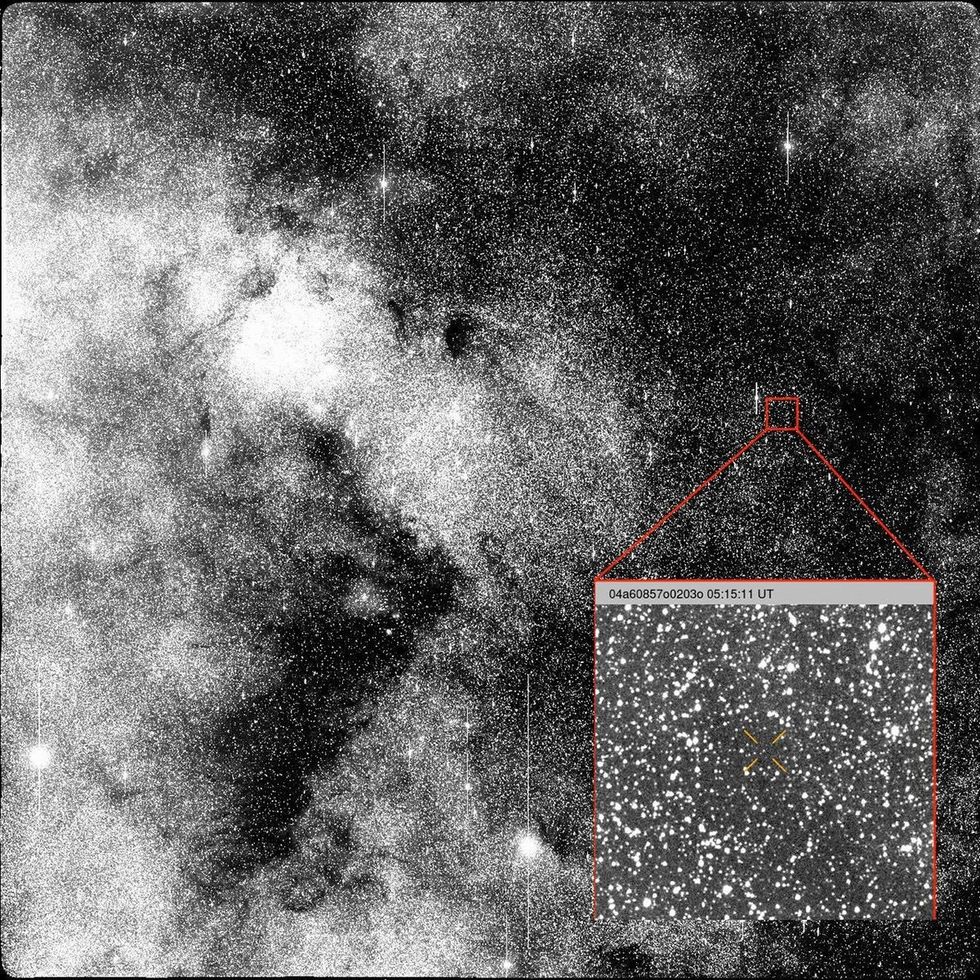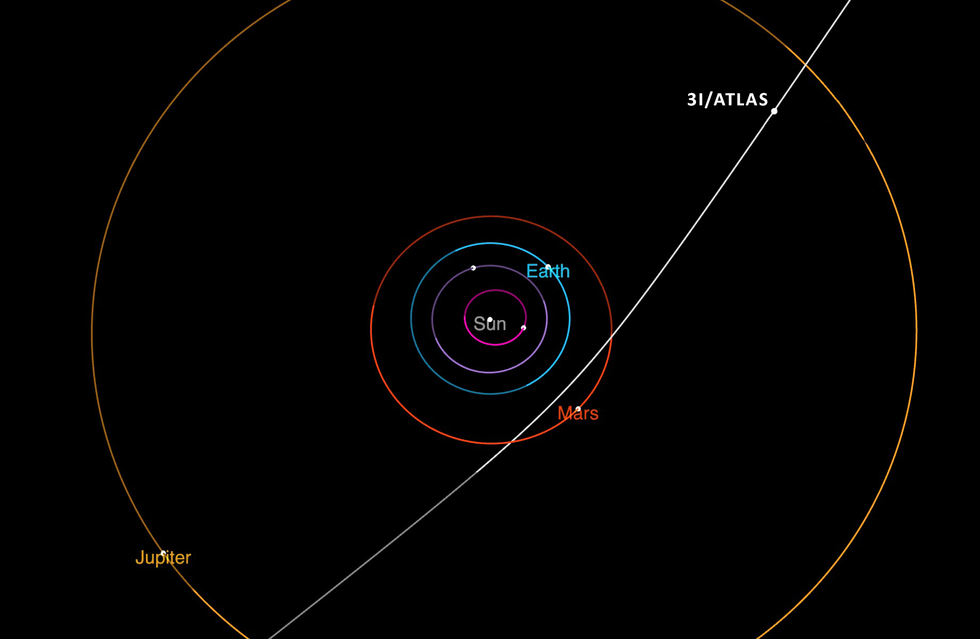Space breakthrough as astronomers 'find evidence bizarre interstellar object is alien spacecraft'

The mysterious flying object was first noticed by astronomers on July 1
Don't Miss
Most Read
Latest
Astronomers have found evidence of a "bizarre interstellar object" that could be an alien spacecraft.
The major space breakthrough, dubbed 3I/ATLAS, was spotted travelling from another star to our sun.
The object is too large to be natural, according to a leading physicist, suggesting that 3I/ATLAS could be made by extraterrestrial life.
Professor Avi Loeb, a theoretical physicist and cosmologist from Harvard University, said: "It is difficult to imagine a natural process that would favour a plunge towards the inner solar system at 60 kilometres per second.
He added: "An alternative is that the object targets the inner solar system by some technological design."
Experts suggest that it must either be an exceptionally large solid mass or a smaller comet with a bright envelope of gas and dust.
The professor explained that if it is not a comet, the chance of it reaching our sun is close to zero due to its vast size.
The mysterious flying object was first noticed by astronomers on July 1 by Nasa's Asteroid Terrestrial-impact Last Alert System.
LATEST DEVELOPMENTS:

Professor Avi Loeb is a theoretical physicist and cosmologist from Harvard University
|GETTY
Due to its flight pattern and speed, scientists concluded that its origins come from outside our solar system.
This makes it only the third interstellar object that humanity has detected, following 'Oumuamua in 2017 and Borisov in 2019.
It is currently heading towards the inner solar system at 135,000 miles per hour.
Nasa predicts that the object, currently heading towards the inner solar system at 135,000 miles per hour, will reach its closest point to the sun on October 30.

This image shows the observation of comet 3I/ATLAS when it was discovered on July 1, 2025
|ATLAS/University of Hawaii/NASA
It is predicted to reach as close as 130 million miles from the sun, passing just within the orbit of Mars, before continuing its journey across space.
Scientists stress that the object poses no threat to Earth and will pass harmlessly at around 150 million miles away at its closest point.
Astronomers cannot directly measure how large it is due to how far the object is away from our solar system.
It has been estimated to be between two and 14 miles in diameter, making it 200 times larger than the 100-metre-long and thin 'Oumuamua.

Comet 3I/ATLAS is currently heading towards the inner solar system at 135,000 miles per hour
|NASA/JPL-Caltech
Highlighting that larger objects are much rarer than smaller ones, Professor Loeb told the Mail: "How many objects on the scale of 'Oumuamua are there for each object that is 24 kilometres in size?"
"The answer is about a million. But we haven't seen a million 'Oumuamua-sized interstellar objects before seeing this one, it's very strange."
He added: "It's not like these objects are floating around in all directions, this object was aiming to get to the inner solar system.
"The question is: 'Why was it sent in the direction of the inner solar system?'"










